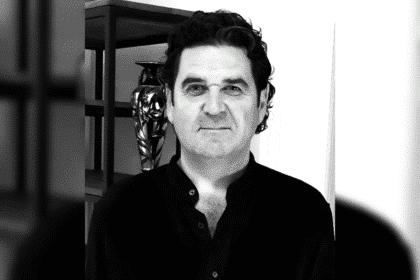In this op-ed, James Bayes, VP ANZ of The Trade Desk (pictured), admits that while his predictions on the World Cup were “undercooked,” the tournament has shown adland that Broadcast Video On-Demand (BVOD) will be “leading the charge” for TV viewership come the next World Cup.
I’ll be the first to admit that, like everyone else, my predictions on the FIFA Women’s World Cup were undercooked.
Last night we watched the Women’s World Cup create history with 5.54 million Australians tuning in to watch the Spain vs. England final. It marks the end of a tournament that captured the Australian spirit like nothing else, reaching a total of 18.6 million viewers across the month. When asked back in March how the tournament would perform on our screens, I was bullish on the Matildas, but my predictions for how their success would translate into broadcast audiences wasn’t even close.
Working with brands, it’s all of our jobs to have our finger on the pulse of key marketing opportunities and cultural moments like this tournament. When major events approach, we always ask ourselves “Just how big will it be” and “Will it really capture the imagination of the country.” But calculating potential audience figures for these types of events relies a lot on historical data, audience sentiment, modelling and more than a little bit of gut feel. We knew the Women’s World Cup would be big but to put it lightly, the tournament’s success blew even the most ambitious estimates out of the water, and I’ve never been happier to admit I was off the mark.
As a nation, Australians are busy celebrating the Matildas’ most successful World Cup campaign ever, but as marketers, this represents an entirely new watermark for streaming. The tournament has once again highlighted an opportunity that many advertisers are still overlooking.
How BVOD has stacked up this World Cup
The proof is in the numbers.
Across the tournament, we saw 15 of the total 64 matches from the competition live on Channel 7’s BVOD channel 7plus breaking a string of viewership records across the month.
We saw the Matildas’ World Cup campaign pick up momentum in line with viewership numbers. What can now only be described as a humbling 1.94 million viewers on their opening night defeat of Ireland, viewership increased with each win. The round of 16 is particularly etched in everyone’s memory when the Matildas shot their way to victory in a 21-minute penalty shootout against Les Bleus, breaking a 20-year viewership record and attracting 7.2 million viewers.
To then see this record broken again less than a week later with 11.5 million viewers in the Matildas’ semi-final loss to England is beyond anyone’s wildest beliefs. In this case, referencing broken records is also an understatement, as the total reach was so high that we don’t have any records to even compare it to. The 957,000 people tuning in via 7plus was the biggest streaming event in Australian history. Executing that flawlessly is something everyone at Seven should be incredibly proud of since live-streaming events at this scale is unbelievably challenging.
Why advertisers and brands are turning to BVOD
With record viewership across the tournament, audiences had their pick of linear TV, BVOD and Subscription Video-On-Demand (SVOD) via Optus Sport. Seeing BVOD’s audience momentum is no surprise as we’ve all become accustomed to the enhanced experience it offers through major events like Tokyo 2020, The Australian Open and State of Origin on Nine.
But what will it take for BVOD to become the main game for advertisers and broadcasters?
Last week, ThinkTV reported commercial free-to-air television declined 7.9 per cent in the 12 months to June 30, 2023. BVOD grew 6.1 per cent to $390m (slower than many expected) and not enough to offset declines in metro television of 10.6 per cent and regional television of 4.7 per cent, which has to be worrying for the sector.
In the same week, Seven reiterated its strategy to become “the most connected news, sport and entertainment brand in Australia.” Central to this will be Seven’s recent acquisition of streaming rights to the AFL starting in 2025 and cricket from 2024, which for the first time will be available free to Australians on BVOD.
The impact of these deals on the future of BVOD and the ability for networks to retain broadcast revenue within the total TV ecosystem cannot be underestimated.
While Seven has publicly stated the commercial impact of the Women’s World Cup will not match the heights of the audience impact (because of limited commercial inventory), a 52-week schedule of live, ad-funded sports on 7plus is game-changing for advertisers and can’t come soon enough as audiences move towards streaming faster than anyone could have ever imagined.
And perhaps strangely, I believe Nine and Ten will also reap the rewards of the AFL and cricket streaming on 7plus. Our industry needs to put in the work to convince brands that total TV can continue to deliver both rapid and scaled reach, especially in a time where streaming is taking over as the main game from broadcast. As we’ve witnessed, sport will play a critical role in delivering confidence across the industry, and brands no longer have to look beyond “the new TV” for scale.
BVOD is no longer the smaller sibling
It’s been an honour to witness the Matildas step out of the shadows and take their rightful place as national sporting heroes. We need to adopt this sentiment in the advertising world and stop looking at BVOD as linear TV’s little sister. Yes, BVOD reached 8 per cent of total viewership on the Matildas’ semi-final night, but this equates to an incredible 957,000 viewers.
So, while the next FIFA Women’s World Cup in 2027 will take place away from Australian shores, we can expect that BVOD will well and truly be leading the charge for TV viewership once more. In the interim, there will be plenty of sporting events on home soil extending BVOD’s reach, including next year’s State of Origin and the Ashes series with “Bazball” down under.
This Women’s World Cup has been nothing short of a spectacle, opening up a whole new ballpark for advertisers. But more importantly, it’s turned world-class female athletes into household names, and has shown a generation of young Aussie girls that their dreams of becoming a soccer star are just as valid as their brothers’.
When I’m asked that same inevitable question in 2027, I hope to never be off the mark about the Women’s World Cup ever again.








